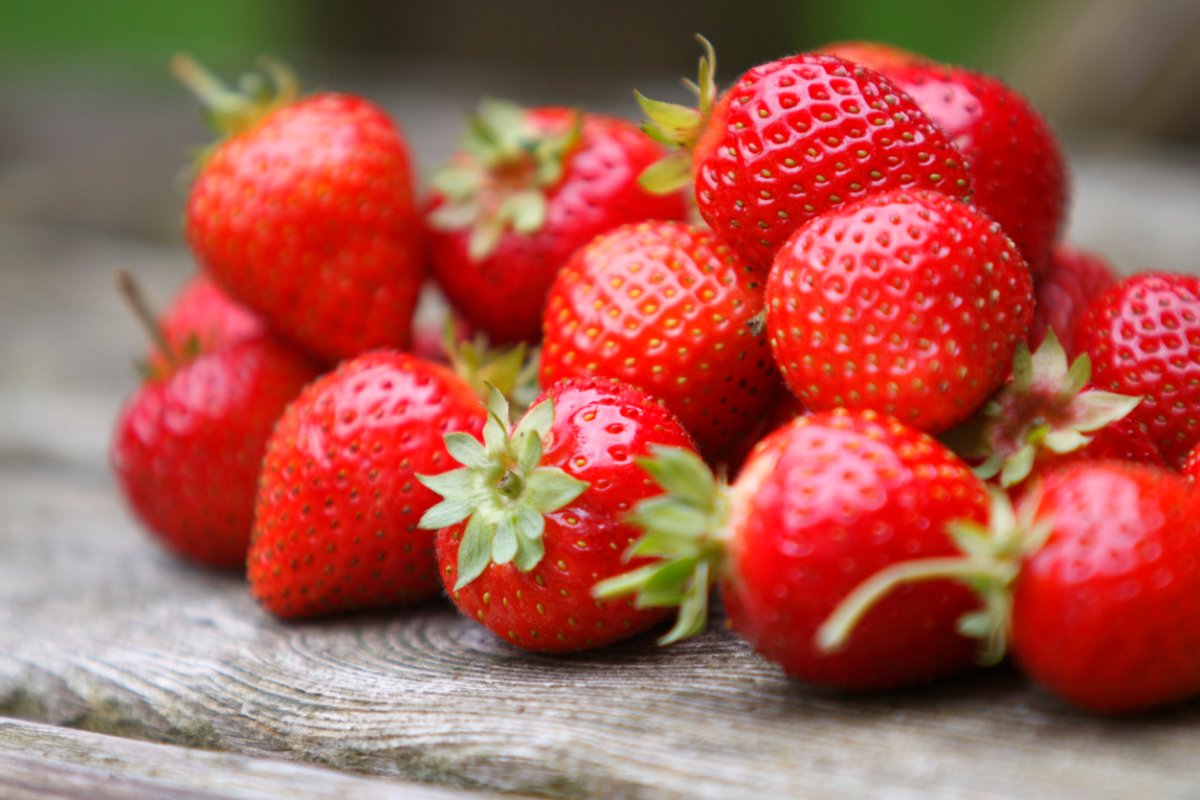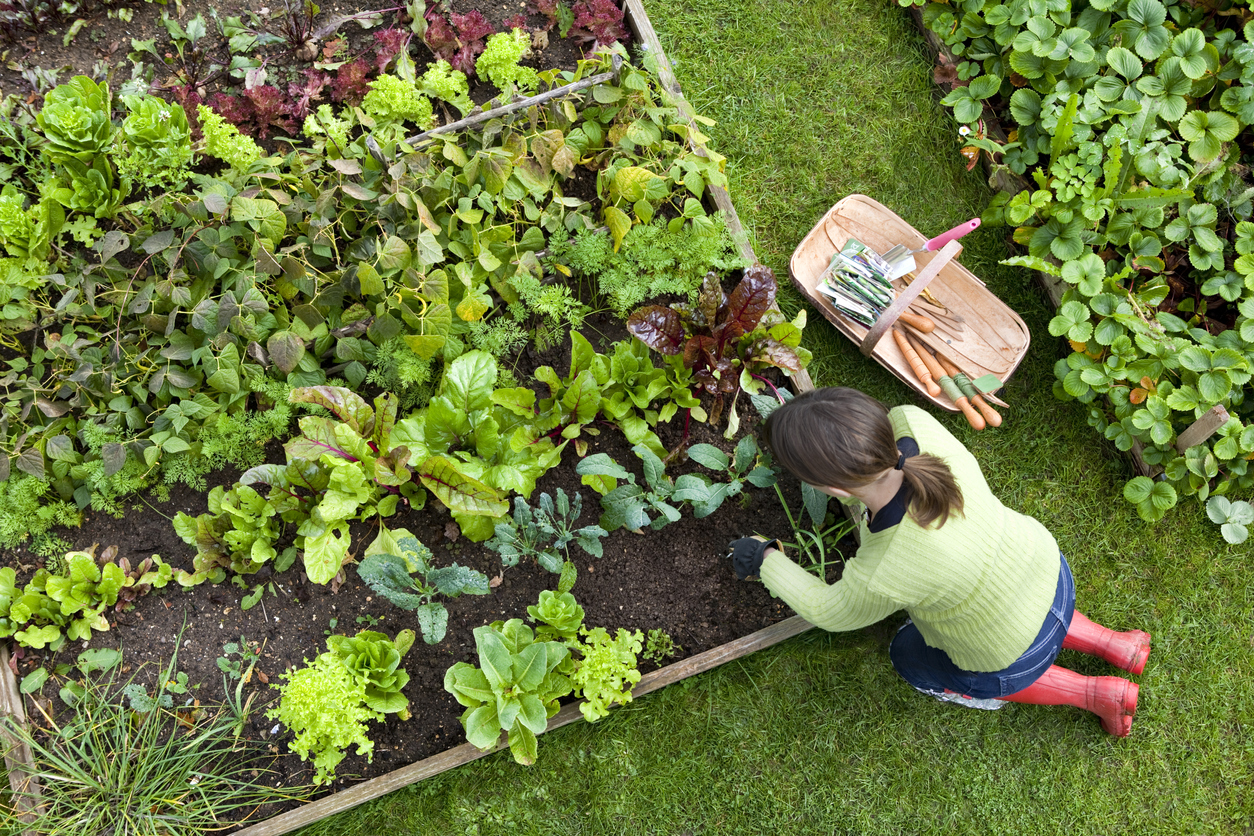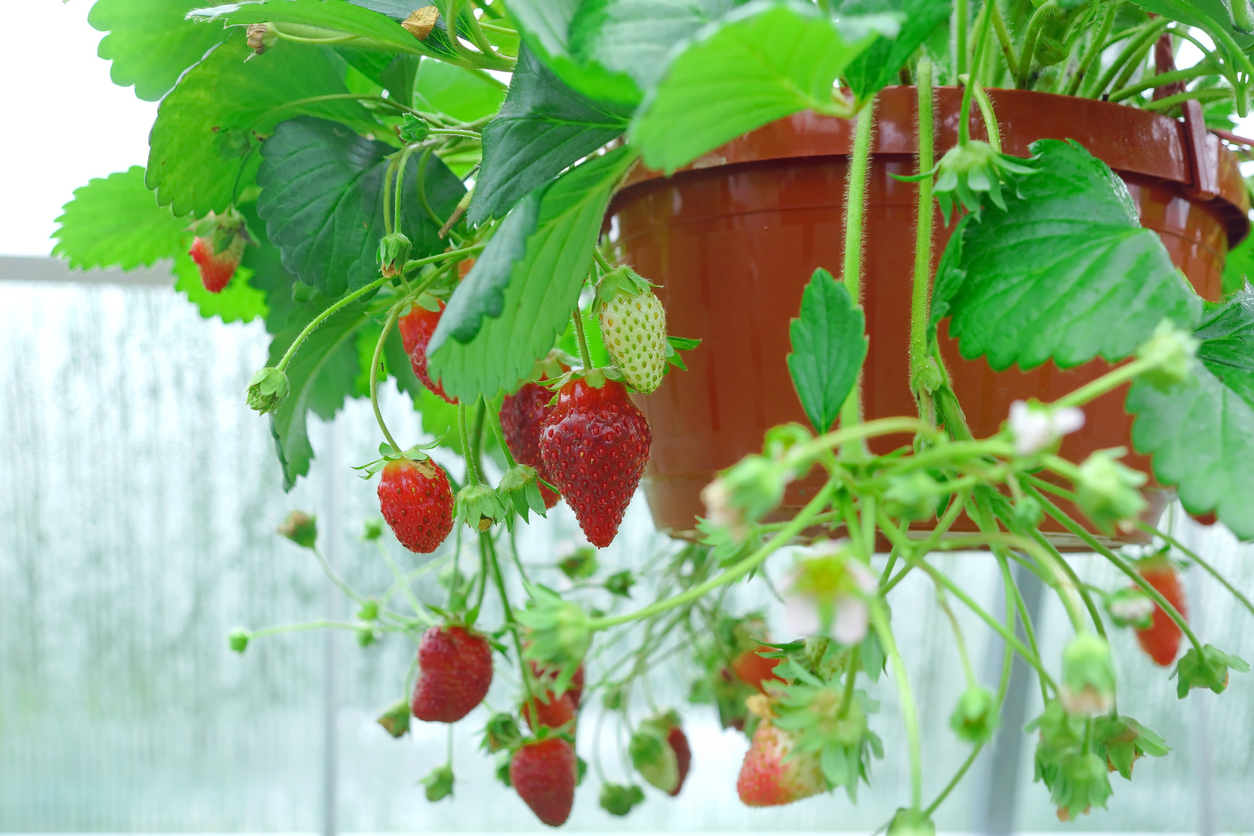

We may earn revenue from the products available on this page and participate in affiliate programs. Learn More ›
Strawberries are popular and delicious fruits that thrive in full sun with regular watering. A truly diverse plant group, strawberries come in plenty of types and varieties to suit a range of growing conditions, from containers to hilled rows. This tasty perennial will continue to produce for years, or you can just choose to grow it for occasional enjoyment. Read on to learn how to grow strawberry plants and, most importantly, how to select the best type for your region, growing conditions, and preferences.
Growing Strawberries at a Glance
Common Name: Strawberry
Scientific Name: Fragaria spp.
Hardiness Zone: 5 to 8
Soil: Sandy loam rich in organic matter
Light: Full sun
Water: Needs regular moisture (not soggy)
Food: Balanced fertilizer at planting and in early August
Propagation: Division, seed, separating runners
Safety: Nontoxic to pets, people, livestock
Strawberry Characteristics
Strawberries are prized perennials for edible gardens in USDA Hardiness Zones 5 to 8. In addition, they propagate themselves from runners or stolons, which is a low-cost, low-effort way to multiply the number of plants in a strawberry bed. Although it only takes 4 weeks for strawberries to grow, many varieties require a year of growth before fruiting. There are three main types of strawberries: June-bearing, everbearing, and day-neutral, and each type is suited to specific growing conditions or gardeners’ preferences.
June-bearing strawberries produce the largest fruits in the largest amounts of any strawberry type. They do this during a 3-week period in early summer in the North and in spring in the South. They’re a popular type for Midwest gardens, but they might need some protection from cold in northern and mountainous regions. June-bearing varieties are the best choice for gardeners who wish to freeze or otherwise preserve the berries.
Everbearing strawberries generally produce a little later in the season but for a longer period than June-bearing plants, so they’re less likely to be damaged by a late frost. They produce smaller yields than June-bearing types, typically in spring and late summer or early fall, and some varieties offer three harvests each growing season. They are a good option for gardeners who prefer to harvest berries to eat fresh rather than to preserve.
Day-neutral strawberries have been bred from ever-blooming types. They bloom and bear fruit from June to September and can take all but the most extreme heat or cold (above about 85 degrees Fahrenheit and below about 35 degrees). They produce smaller berries but provide a longer window for enjoying fresh fruit.
Recommended Strawberry Varieties
When choosing the right strawberry plant to grow in your garden, consider the characteristics of each strawberry type, your growing zone, sunlight and soil issues, how you plan to enjoy your harvest, and which varieties are popular and grow reliably in your area.
| Variety | Type | Growing Zones | Best For |
| Earliglow | June-bearing | 4 to 8 | High yield, firm and flavorful fruit, vigorous runners |
| Quinault | Everbearing | 4 to 9 | Disease resistance, large berries until fall, containers |
| Tristar | Day-neutral | 4 to 8 | Cold hardiness, sweet fruit flavor, easy care, hanging baskets |
| Allstar | June-bearing | 4 to 8 | Large and attractive berries, disease resistance, cold hardiness |
| Seascape | Day-neutral | 4 to 9 | Cross-bred for high yield and excellent flavor, disease resistance, range of climates |
| Camarosa | June-bearing | 5 to 8 | Fall berries in warmer climates, productive, flavorful, good pick-your-own option |
| Ozark Beauty | Everbearing | 4 to 8 | Large and deep red berries produced in waves, cold hardiness, disease resistance |
| Sparkle | June-bearing | 3 to 8 | Northern and cold climates, heirloom variety, beginners |
| Tribute | Day-neutral | 4 to 8 | High yield, medium-large fruit, vigorous growth |
Planting Strawberries

As long as the plants receive plenty of sun, loamy soil, and water, strawberries are not difficult to grow, and they’re gratifyingly fast growers, yet they still require planning and patience. Be sure to check guidelines for your specific strawberry type and variety, as well as local frost dates and recommendations, before planting.
When do you plant strawberries?
In most climates, plant strawberries in March or April, or about 6 weeks before your average last frost date. Northern gardeners should plan to set out dormant transplants about a month to 6 weeks before their last frost—usually in April or May. However, wait until after the last frost to set out transplants or seedlings that are already growing in pots.
Southern gardeners planning to raise strawberry plants over winter for a spring harvest should choose June bearers, planting them between mid-September and early November. After their spring crop, strawberry plants can be plowed or tilled under because they don’t deal well with the South’s intense midsummer heat.
Because strawberries don’t breed true from seed, most plants are grown from dormant, bare-root transplants. But if you do choose to start strawberries from seeds, sow them indoors 4 to 5 months before your last frost date.
Where do you grow strawberries?
Strawberries can be grown in rows, garden beds, or containers, or even as an attractive ground cover. The site you select will depend on the soil, sun exposure, available space, and intended use of the crop. For example, if you want your strawberries to spread and return or desire higher yields for preserving the fruit, you’ll need a larger garden bed.
No matter the size of the strawberry bed, be sure the location has deep loam or sandy loam soil that drains well and is located near a water supply. Avoid growing strawberries in beds in which nightshade crops (tomatoes, potatoes, peppers, eggplant) have grown recently.
If you do not have loamy soil or if your soil lacks nutrients, grow strawberries in a raised garden bed with good drainage and added compost. If you simply want to enjoy some fresh berries all summer, you can grow strawberries in a large container, which is also a great solution for growing strawberries indoors. Just be sure to supplement natural sunlight with grow lights.
Steps for Growing Strawberries
Once you’ve selected a strawberry variety, or even better, a few different varieties, you can sow strawberries from seed, from bare-root plants, or potted transplants. Bare-root strawberries have no soil or leaves but often cost less and can fare better, especially since they can go into the ground earlier than potted transplants.
The type selected can affect how far apart to plant strawberries. June-bearing strawberries grow best in matted or spaced rows. Everbearing and day-neutral strawberries grow best on a hill system or multiple rows of raised soil with 2-foot walkways between, since they produce fewer runners than June-bearing plants.
Before You Begin
If you receive bare-root strawberries, store them in a cool, dark place at temperatures between 32 and 40 degrees Fahrenheit, if possible, until planting time. A cool basement, unheated garage, or refrigerator can work for storage. Keep the roots lightly moist by misting with water, if necessary.
Note that when properly cultivated, June-bearing strawberries won’t bear during their first year in the North and require about 6 months to do so when planted in autumn in the South.
How to grow strawberries from seed
- Fill a small pot with damp, sterile seed-starting mix.
- Press the seeds into the surface of the mix without covering them.
- Place the pot inside a plastic bag, zip the bag shut, and place it inside your refrigerator for 1 month.
- Position the pot under a grow light or on a sunny windowsill at a temperature between 65 and 75 degrees Fahrenheit.
- Watch for sprouting seeds within 1 to 6 weeks.
- When the seedlings have three leaves, give each one its own 3-inch pot filled with potting mix.
How to grow strawberries from rootstock or transplants
- Choose a location with a soil pH between 5.5 and 6.8 that receives at least 6 hours of sun per day, though 10 hours is preferable.
- If the soil is heavy clay and you can’t construct a raised bed, strew 4 inches of compost over the surface of the ground and till it in.
- Give sandier soils 1 inch of compost to help them retain moisture.
- Mix an organic berry fertilizer, such as 4-3-4 or 10-10-10, into the top 5 inches of soil according to product directions, usually about 2 pounds for every 100 square feet of bed.
- If planting bare-root strawberries, soak the roots in water for about 30 minutes before planting.
- Use a trowel to place transplants, rootstock, or seedlings 18 inches apart for June bearers, which make many runners, and about a foot apart for hill planting of everbearing and day-neutral varieties.
- Place rows 2 to 3 feet apart.
- Make holes wide enough to allow roots to spread.
- Set each transplant deeply enough that the top of its roots are covered, while just the upper half of its crown protrudes above the ground; see a helpful illustration from Penn State Extension.
- Pack the soil firmly around the strawberries and water right after planting.
If you’re growing the plants in containers, use a good-quality potting soil for strawberries. Southern gardeners setting out strawberries in autumn should lay black plastic mulch over their soil to help keep it warm over winter, and insert the plants through holes in that plastic. (Because plastic mulch is also handy for suppressing weeds, Northern gardeners might want to try this, too.)
To overwinter strawberries, blanket the plants with 4 inches of straw in late autumn or early winter when daytime temperatures remain below 40 degrees Fahrenheit. In mid-spring, rake the straw off and use it to mulch the plants. If frost threatens after the plants begin to bloom, pile the straw on top of them again or place row covers over them until the threat passes.
Can you grow strawberries in containers?

Strawberries are certainly one of the types of berries that you can grow in pots, though you won’t get the kind of fruit yield you would with larger beds. Plant three everbearing or day-neutral plants per square foot of space, or four smaller alpine or wild strawberries. To concentrate the plants’ energy on producing fruit, remove any runners that form.
Look for rectangular containers about 24 inches long or round pots a minimum of 12 inches in diameter and at least 4 to 6 inches deep. Avoid dark-colored containers, since they retain too much heat, and be sure to check for (or add) drainage holes. Water pots whenever the soil is dry 1 inch beneath the surface and feed the strawberries every 2 weeks with liquid plant food, following the directions on the label. In cold climates, move the containers into an unheated outbuilding during winter.
Watering Strawberries
Water transplants well and ensure that they continue to receive at least 1 inch of water per week. To avoid fungal diseases, use drip irrigation or a soaker hose so water doesn’t get onto the foliage. Step up watering as berries grow, but avoid overwatering the plants, which can dilute the fruit’s flavor.
You can apply plastic mulch or cover the ground between plants with straw or shredded leaves to suppress weeds and retain moisture.
Fertilizing Strawberries
Aside from fertilizing at planting time with a balanced organic fertilizer, provide ammonium nitrate or equivalent nitrogen fertilizer a month after planting and after harvest. Use a small amount, about a tablespoon per plant, sprinkled in a narrow band 3 inches from the plant’s crown; avoid getting it on the leaves or brush it off after application.
Do not apply too much nitrogen, which could encourage heavy leaf and plant growth at the expense of fruit production. Do not apply fertilizer in the spring of a fruiting year, which could lead to softer berries than desired.
Pruning Strawberries
It helps to pinch off any flowers that appear on June-bearing plants during their first year and any blooms that appear before June on everbearing or day-neutral plants to put energy into vegetative growth. In midsummer, Northern gardeners should thin the runners on June-bearing strawberries to leave only three runners per plant, 10 inches apart from each other.
Before the beginning of August, mow off June-bearing plants to a height of 1 inch above their crowns, raking away the chopped foliage and disposing of it elsewhere. This helps eliminate disease and provides a strong winter canopy, as the plants should leaf out again within a couple of weeks or so.
Harvesting Strawberries
Berries usually ripen about a month after full bloom. Pick ripened (fully colored) berries every 3 days in the morning, if possible, and refrigerate them at once. Don’t wash them or remove their caps until just before you intend to eat or preserve them.
Potential Pests and Diseases
Strawberries are subject to damage from pests that feed on the plants’ roots, leaves, flowers, or fruit. Root feeders include the strawberry root weevil, the strawberry crown borer, and white grubs. Some mites and leafrollers can attack foliage. Tarnished plant bugs feed on flowers, which can lead to deformed berries. Some insects, beetles, slugs, and birds can damage fruit.
Root rot or crown rot can occur with exposure to Phytophthora, a soilborne fungus. Root rot can damage strawberries in cool weather and cause plants to collapse. Crown rot can cause collapse in warmer weather.
The best way to prevent pests and diseases is to stick with good growing practices, such as opting for well-draining soil, watering regularly but not too much, and checking plants frequently—for example, looking for slug damage and setting out slug baits when needed. Remove leaf litter in fall to give insects fewer hiding spots. It also helps to buy rootstock or transplants from reputable sources to prevent the introduction of diseases.
If beds show signs of mold or rot, remove mulch and consider site rotation every 3 or 4 years. Once the new site’s plants begin bearing fruit, you can plow or till under the old one.
Protect your harvest by covering the plants with bird netting to keep maturing berries safe from eager beaks and by harvesting as soon as fruit ripens. Pruning or thinning dense mats of strawberries can help cut down on pests. If you have a tough-to-solve pest or disease problem, check with your local extension office for ideas on addressing it with organic methods.
Final Thoughts
Figuring out the best way to grow strawberries in your garden depends on the kind of yield you want, where you live, and your garden’s soil and sun conditions. In the plants’ second year, wait until after they bear their crop to fertilize them, as feeding too early can promote foliage growth at the expense of berries. Do plenty of research up front on the best location and planting system for the type of strawberry you want to grow, and you’ll be rewarded with an abundance of easy-care, juicy goodness.








